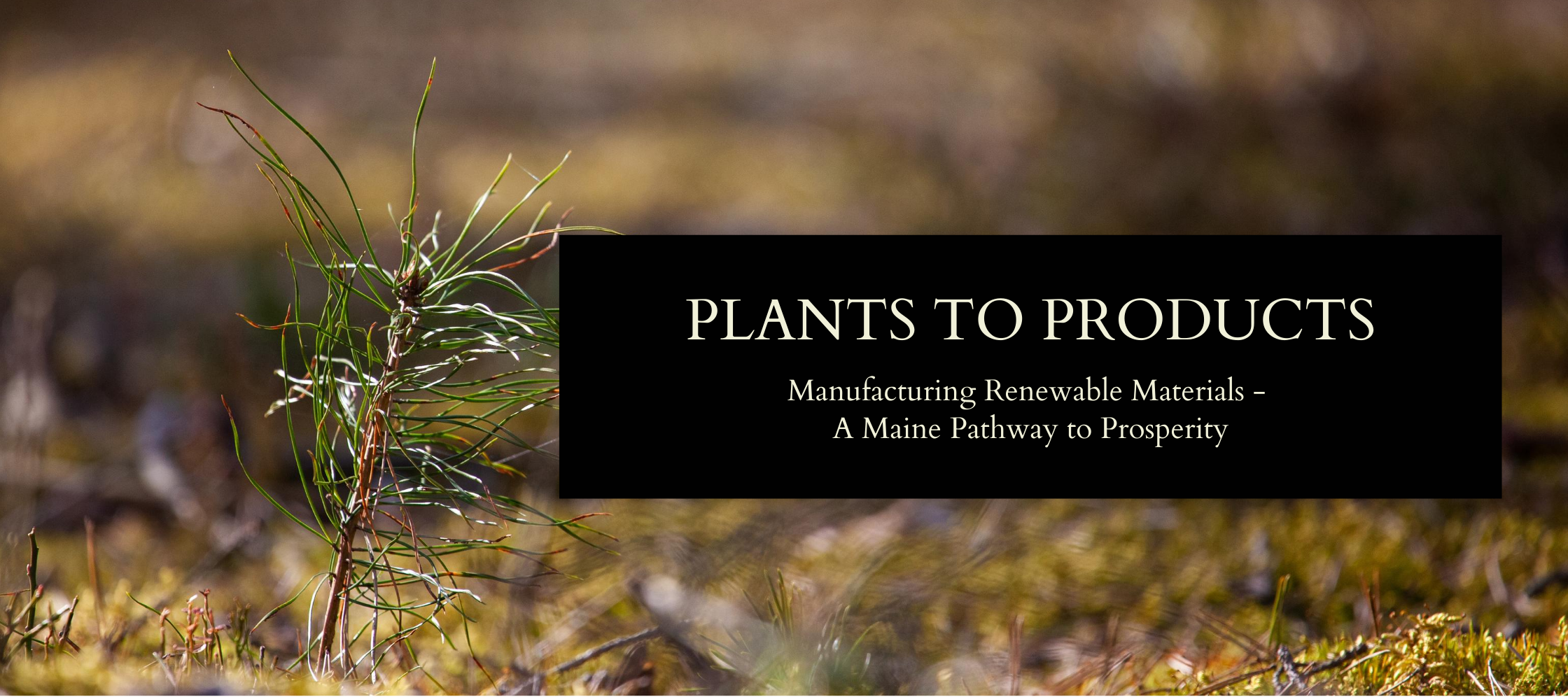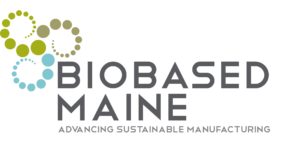
Technical Studies, Sources and Data Assumptions:
Reports
- Maine Biobased Feedstock Assessment
- Workforce Baseline Assessment for Biobased Manufacturing in Maine
- Biobased Maine Renewable Chemicals Study
Data sources and assumptions that support the scenarios outlined on pp. 17 and 18 of the report:
- Maine Bioproduct Climate Benefits - Assumptions and Calculations
- Maine Bioproduct Economic Benefits - Assumptions and Calculations
Sources, reports, assumptions, and additional references:
- Forest Opportunity Roadmap/Maine. (2018) Vision and Roadmap for Maine’s Forest Products Sector.
- Maine Department of Community and Economic Development, Maine Economic Development Strategy 2020-2029: A Focus on Talent and Innovation, November 15, 2019.
- BIO, BIO’s Pacific Rim Summit Will Highlight Growth in California’s Advanced Biofuels and Biorenewables Sector, BIO website, accessed April 2015.
- Hawkin, Paul, and Tom Steyer. “Drawdown.” (May, 2020) Project Drawdown, Penguin Publishing Group.
- U.S. Energy Information Administration, U.S. non-combustion consumption of fossil fuels.
- Science Based Targets, Companies Taking Action.
- The Coca-Cola Company, Reducing Carbon in our Value Chain.
- MarketsandMarkets. (Apr, 2020). Bioplastics & Bio- polymers Market. Report Code: CH 2325.
- DuPont Nutrition and Biosciences. (2019). Plant-based footwear from DuPont Tate & Lyle’s Bio-PDO. Tate & Lyle BioProducts.
- Frangoul, Anmar, CNBC (Mar, 2018). Lego to launch sustainable, plant-based plastic piece.
- Mattel Newsroom. (Dec,2019). Mattel Announces Goal to Achieve 100% Recycled, Recyclable or Bio-based Plastic Materials in All Products and Packaging by 2030.
- McCoy, M. “Cleaning Product Makers Bask in New Sol- vents.” Chemical & Engineering News. January 19, 2015.
- Eco Products, Polylactic Acid (PLA).
- U.S. Environmental Protection Agency. Ethanol from wood chips must achieve ≥60% reductions in lifetime GHG emissions compared to gasoline, roughly 3x the benefit of ethanol from corn.
- USDA Forest Service 2019 Forests of Maine, 2018. Resource Update FS-205. Madison, WI: U.S. Department of Agriculture, Forest Service. 20.
- Maine Department of Conservation and Forestry 2018 Wood Processor Report (Dec. 2019)
- Data extracted from Innovative Natural Resource Solutions LLC Report, "Wood Feedstock Supply for Biobased Materials in Maine", Prepared for the Environmental Health Strategy Center and Biobased Maine, October 2017.
- Fossum, Donna, Lawrence S. Painter, Valerie L. Williams, Allison Yezril, and Elaine M. Newton, Discovery and Innovation: Federal Research and Development Activities in the Fifty States, District of Columbia, and Puerto Rico. Santa Monica, CA: RAND Corporation, 2000.
Executive Summary
Maine’s path to climate leadership and a strong rural economy lies through biobased manufacturing — that is, making everyday products and chemicals from renewable resources, like those from our forest, farms, or sea, instead of from oil and gas.
Rapidly rising global demand drives this opportunity. In response to the climate crisis, major corporations are making commitments to replace petroleum-based products with biobased products in an effort to reduce their carbon footprint.
If we act strategically now, Maine has a unique opportunity to create high paying green jobs and revitalize rural communities.
Indeed, the economic and climate benefits that biobased manufacturing offers are tremendous. According to a plausible development scenario based on actual companies and proven technologies, we have calculated the following benefits.
Over the next ten years, production of renewable chemicals and biofuels in Maine could create and retain more than 4,000 jobs and attract nearly $4 billion in capital investment.
In the next thirty years, biobased manufacturing in Maine could reduce the use of fossil fuels by more than 20 million tons and slash greenhouse gas emissions by 44 million tons.
State policymakers took a significant step in 2020 toward establishing this industry in Maine, passing the nation’s most competitive tax incentive for the production of renewable chemicals. But much more is needed. Our analysis identified these top strategies for establishing this new industry in Maine:
- Economic development advocates must continue to assist with matchmaking between distressed regions with idle industrial sites available and emerging biotechnology companies who could make use of them.
- Key stakeholders must market and promote Maine’s unique assets to biotechnology com- panies at national and international industry conferences, establishing Maine as the place to locate a biobased manufacturing company.
- Policymakers must enact and provide financial incentives, including capital funding for R&D and commercialization, to reduce financial barriers restricting investment.
- Elevate the climate benefits of Maine’s renewable resources to increase attention and investment in Maine assets.
- Pair biofuels production with more profitable technologies that generate higher-value specialty chemicals or bioplastics.
With the state’s vast forest resource; established system for harvesting, transporting, and processing renewable raw material; and highly skilled workforce, Maine is well-positioned to take advantage of this unparalleled opportunity — but stakeholders must act now.
Maine’s rural communities need action now, as too many are suffering under economic distress. Declining industries have led to job loss, the hollowing-out of downtowns, and an exodus of young people and families from once-thriving communities.
Much of the recent decline has been in the forest products sector, which now has more low-cost raw material available to support new biobased manufacturing.
With an established and robust biobased industry Maine’s rural communities will recover, bolstered by the creation of high-paying green manufacturing jobs, and Maine will be a global leader in the fight to slow climate change.
Authors of the report:

Biobased Maine promotes the sustainable use of renewable biomass from forest, farm and sea to manufacture the next generation of renewable chemicals, advanced materials and fuels.

Defend Our Health works to create a world where all people are thriving, with equal access to safe food and drinking water, healthy homes, and products that are toxic-free and climate-friendly.
